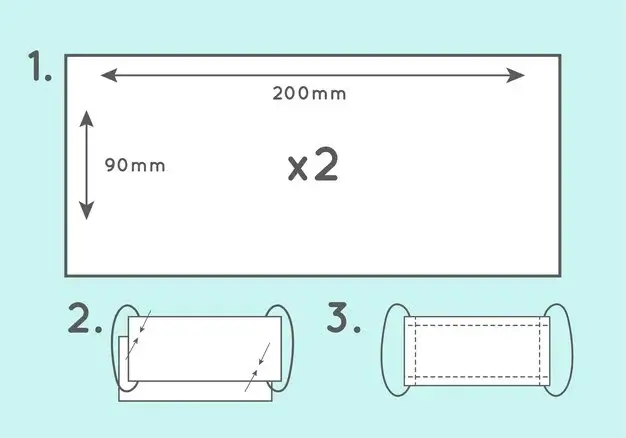Math can feel intimidating. Many students fear long division because of its multiple steps, remainders, and confusing numbers. But what if there was an easier, more visual way to divide one that actually made sense?
That’s where the long division inside the box method two-digit divisor example comes in. It’s a modern, structured, and easy-to-grasp technique that turns complex division into something students can finally enjoy.
This article will explain what the box method is, how it works step by step, and why it’s one of the most effective division techniques for both kids and adults learning math again.
What Is the Box Method in Long Division?
The box method is a visual strategy for dividing numbers. Instead of stacking digits in the traditional long division format, you use a box or grid to organise your work.
Each section of the box represents a place value — hundreds, tens, or ones helping you see how numbers break apart during division. It’s clean, simple, and avoids the messy “bring down, multiply, subtract” confusion that frustrates so many learners.
This method is especially helpful when dividing by two-digit numbers, such as 24, 36, or 48. It allows students to estimate, multiply, and subtract in clear, manageable steps.
Why the Box Method Works So Well
Mathematics is about patterns and structure. The box method brings both to life by showing the relationship between numbers rather than just rules to memorise.
Here’s why students (and even teachers) love it:
- It simplifies long division into smaller, logical chunks.
- You can see how each part contributes to the final answer.
- It helps improve number sense and place value understanding.
- Mistakes are easy to find and correct.
- It builds confidence, especially for visual learners.
The box method doesn’t just teach how to divide — it teaches why division works.
Understanding the Basic Concept
Before jumping into a two-digit example, let’s review what’s happening during long division.
When you divide, you’re splitting a number (the dividend) into equal parts, defined by another number (the divisor). The result is the quotient, and any leftover part is the remainder.
In the box method, this process is neatly arranged inside boxes so you can focus on each step individually — almost like solving a puzzle one piece at a time.
Step-by-Step Example: Two-Digit Divisor
Let’s solve an example together using the box method.
Example: Divide 1,728 ÷ 24
We’ll go through it step by step.
Step 1: Draw the Box
Draw a large rectangle and divide it into columns — one for each place value (hundreds, tens, and ones). Label them clearly.
HundredsTensOnes
This setup keeps your work organised.
Step 2: Estimate How Many Times 24 Fits
Ask yourself: how many times does 24 go into 1,728?
We’ll start with rough estimates using easier numbers.
24 × 10 = 240
24 × 20 = 480
24 × 30 = 720
24 × 40 = 960
24 × 50 = 1,200
24 × 60 = 1,440
24 × 70 = 1,680
So, 24 goes into 1,728 roughly 70 times, with a little left over.
Step 3: Subtract the Closest Multiple
Now subtract the largest multiple of 24 that fits into 1,728.
1,728 − 1,680 = 48
That’s your remainder for now.
Step 4: Continue the Process
Check how many times 24 fits into 48.
24 × 2 = 48
Perfect!
Now add the previous partial quotients together:
70 + 2 = 72
Your final answer is 72.
Step 5: Write the Final Answer
1,728 ÷ 24 = 72
And that’s it!
No confusing steps, no getting lost in columns — just organised reasoning.
Why the Box Method Makes Division Easier
The box method gives students a mental map to follow. Instead of memorising “divide, multiply, subtract, bring down,” they can think logically about number sizes and place values.
It encourages flexibility: if you can’t figure out the exact multiple, estimate and adjust. The box makes it easy to track what’s been done.
For teachers, this means fewer anxious students and more engaged learners who actually understand what division means.
Benefits of Using the Box Method
- Visual clarity: Numbers are placed in boxes, not jumbled across a page.
- Reduced errors: You see every step clearly, making mistakes easier to spot.
- Logical progression: Each step flows into the next with purpose.
- Improves confidence: Students no longer fear large divisors.
- Builds strong math foundations: Helps with multiplication, fractions, and algebra later.
This approach isn’t just about solving a problem — it’s about understanding the journey of numbers.
Common Mistakes and How to Avoid Them
Even with a structured method, mistakes can happen. Here’s how to avoid the most common ones:
- Misjudging multiples: Practice estimating products. Rounding helps.
- Forgetting to record remainders: Always track what’s left in the last box.
- Skipping place values: Label each column (hundreds, tens, ones) to stay organised.
- Not checking answers: Multiply the divisor by the quotient to confirm accuracy.
The more you practice, the more natural it becomes.
A Simpler Example for Practice
Let’s try an easier one to build confidence.
Example: 624 ÷ 12
Step 1: 12 × 50 = 600
Subtract → 624 − 600 = 24
Step 2: 12 × 2 = 24
Add quotients → 50 + 2 = 52
Final Answer: 624 ÷ 12 = 52
This demonstrates how straightforward the method is, even for young learners.
Real-World Use: Why You’ll Actually Need This
Many people wonder why they need to learn long division when calculators exist. But the truth is — this skill builds logic and problem-solving abilities that go far beyond math class.
You’ll use division to:
- Split bills and budgets evenly
- Calculate discounts or price per unit
- Determine speed, time, or quantity in everyday problems
- Understand data patterns and percentages
The box method makes these mental calculations faster and clearer — it trains your brain to think structurally and efficiently.
Emotional Hook: From Fear to Confidence
For many students, math anxiety starts with long division. Rows of numbers, confusing steps, and endless remainders create fear that lasts for years.
But when they learn the box method, something changes.
Suddenly, they’re not afraid. They see order instead of chaos. They realise they can solve complex problems and that confidence spreads to other subjects, too.
It’s not just about math; it’s about building a growth mindset.
Teaching the Box Method: Tips for Parents and Educators
1. Start with Visuals
Draw boxes large enough for children to see and write inside comfortably. Use colour-coding to separate steps.
2. Use Real Numbers
Apply division to real scenarios — sharing 48 candies among 12 friends or dividing 1,728 apples into crates.
3. Reinforce Estimation
Encourage guessing multiples before calculating exactly. Estimation improves number sense.
4. Keep It Positive
Celebrate small wins. Confidence is the foundation of mastery.
5. Gradually Increase Difficulty
Move from one-digit divisors to two-digit and then three-digit, once the child feels ready.
Learning math should feel like discovery, not punishment.
Why Two-Digit Divisors Are Easier With Boxes
Two-digit divisors can look intimidating at first. The box method breaks them down into friendly pieces.
Instead of guessing how many times 48 goes into 1,344 all at once, you estimate in parts — 48 × 10, 48 × 20, 48 × 30 — until you’re close.
The boxes keep track of these partial quotients, making it impossible to lose your place. It’s division with clarity, not chaos.
Advanced Example: 2,856 ÷ 36
Let’s apply everything we’ve learned.
Step 1: Estimate
36 × 50 = 1,800
36 × 70 = 2,520
36 × 80 = 2,880 (too high)
So we start with 70.
Step 2: Subtract
2,856 − 2,520 = 336
Step 3: Divide Remainder
36 × 9 = 324
Subtract → 336 − 324 = 12
Step 4: Add Quotients
70 + 9 = 79
Final Answer: 2,856 ÷ 36 = 79 remainder 12
You can check: 79 × 36 = 2,844 + 12 = 2,856. Perfect!
This example shows how accurate and organised the box method is for complex problems.
Comparing Box Method vs Traditional Long Division
| Aspect | Box Method | Traditional Long Division |
|---|---|---|
| Visual Clarity | High | Moderate |
| Error Detection | Easy | Harder |
| Ease for Beginners | Excellent | Difficult |
| Step Visibility | Every step shown | Steps hidden in work |
| Speed for Complex Problems | Slightly slower but clearer | Faster if mastered |
While the traditional method may be quicker for experts, the box method is far better for comprehension, confidence, and visual learning.
The Power of Visualisation in Learning
Studies show that students retain mathematical concepts better when they can visualise them. The box method transforms abstract numbers into physical spaces.
Each box becomes a story — a piece of a bigger puzzle that fits perfectly when completed.
That’s why this technique works not only in classrooms but also for adults re-learning math for career exams or tutoring their children.
Practice Makes Perfect
To truly master this skill, practice with numbers of varying sizes. Start with smaller dividends, then work up to larger ones with remainders.
Here are a few exercises you can try:
- 936 ÷ 24
- 1,512 ÷ 36
- 2,240 ÷ 28
- 3,402 ÷ 45
The more you practice, the faster and more confident you’ll become.
Conclusion
Long division inside box method two-digit divisor example may sound technical, but it’s actually one of the simplest ways to make math meaningful again. It replaces confusion with clarity and fear with logic.
This method teaches more than division it teaches how to think, estimate, and reason. Whether you’re a student, parent, or teacher, the box method transforms frustration into understanding.
Remember, every great mathematician started with one step and with the box method, that step is easier than ever.
So grab a pencil, draw your boxes, and discover that long division isn’t scary, it’s just a beautiful pattern waiting to be solved.
Frequently Asked Questions
What is the box method in long division?
It’s a visual way to organise division using boxes for each place value, making the process clear and structured.
Why is the box method easier than traditional division?
It breaks complex problems into smaller, visual parts, reducing confusion and improving understanding.
Can you use the box method for two-digit divisors?
Yes! It’s especially useful for two-digit numbers since it allows easy estimation and step-by-step solving.
What age group can learn this method?
Students from grades 4 and up can grasp it easily, but even adults find it helpful for re-learning division.
How do I check my answers?
Multiply the divisor by your quotient and add any remainder. The result should match your original number.







